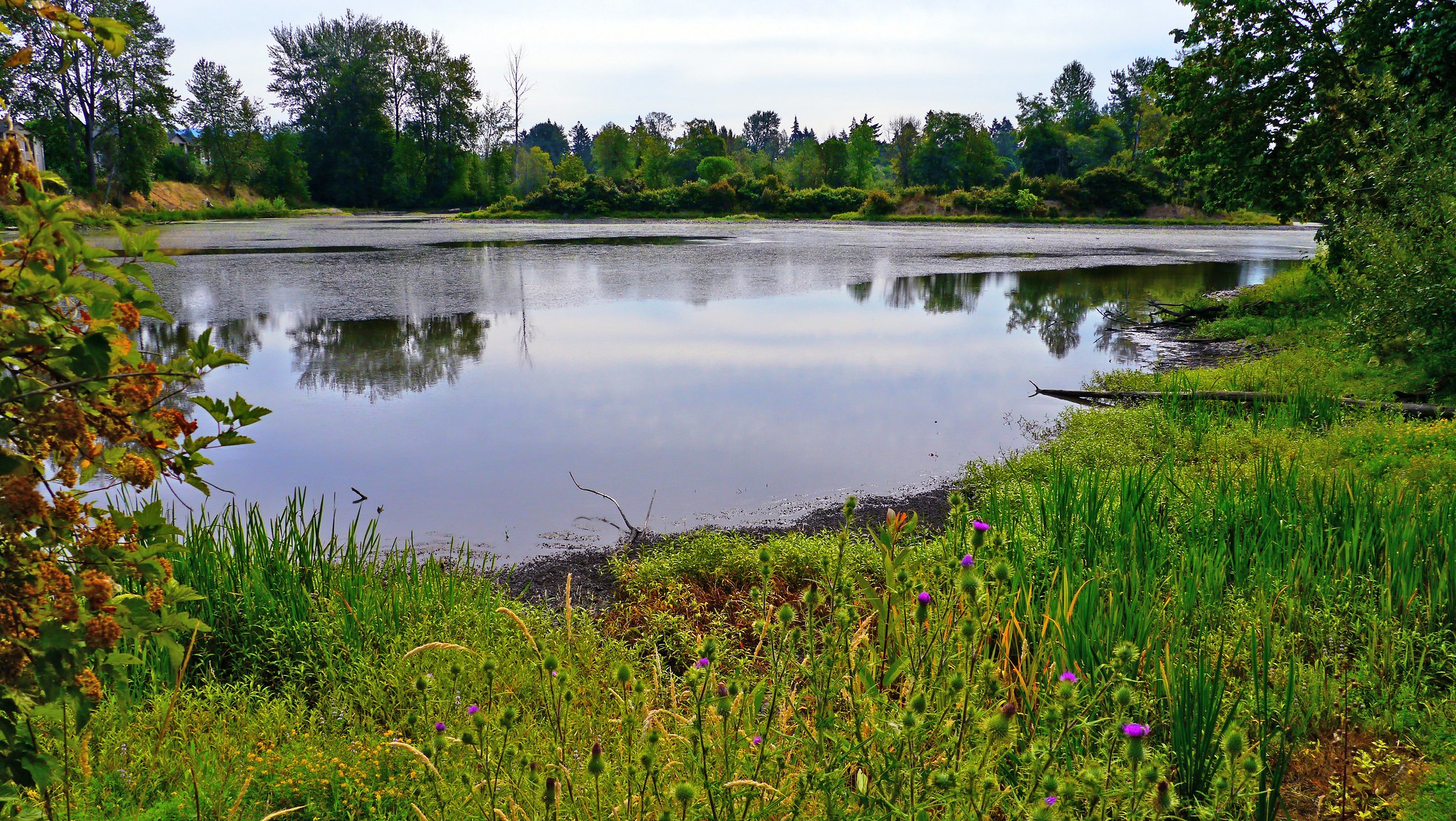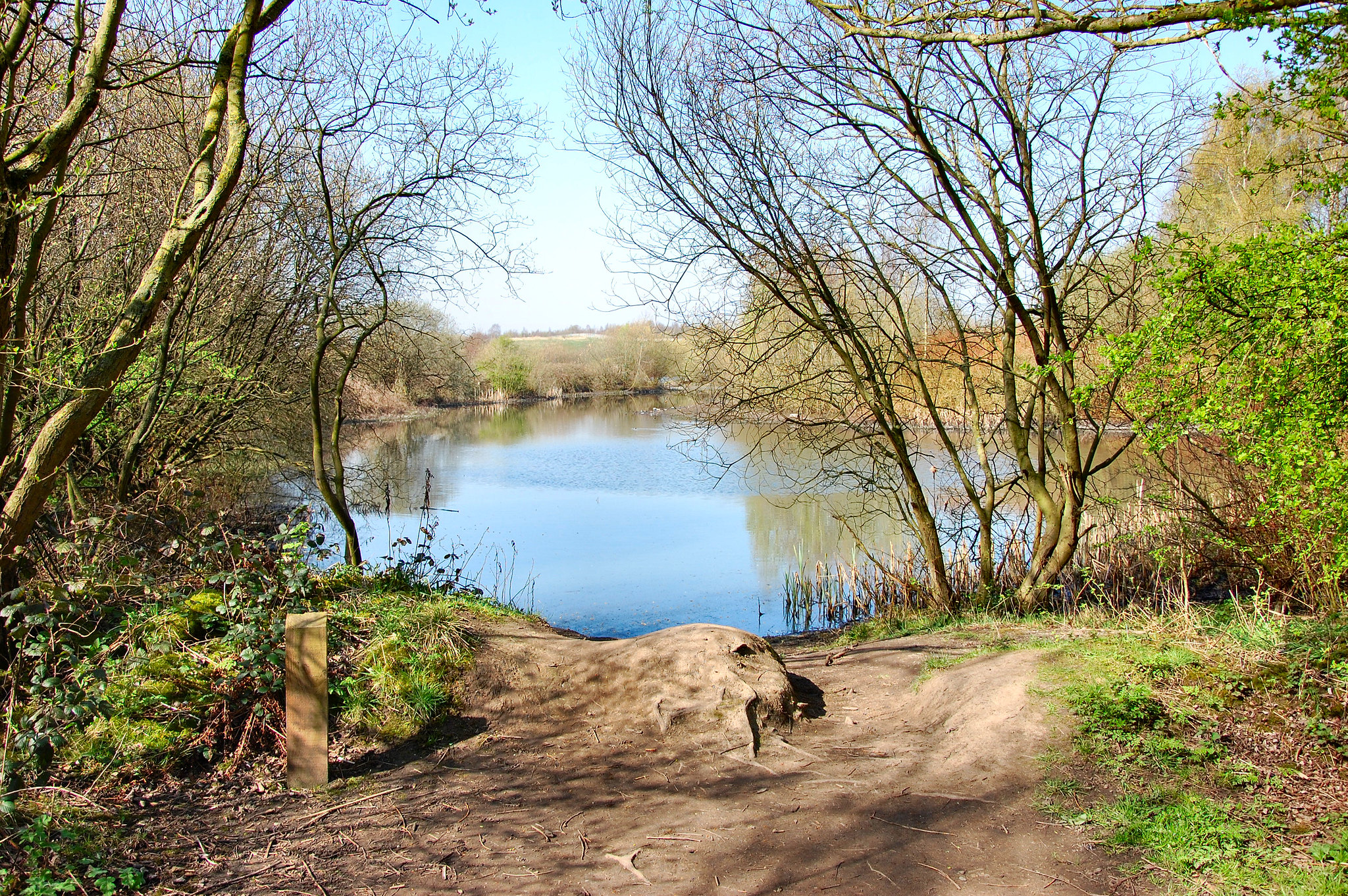Ponds, pools and puddles are a common sight in our landscape and play a very important part in sustaining wildlife. In Volume 148 of the New Naturalist Series, the authors provide a comprehensive survey of the variety of plants and animal life for which they are a habitat, and discusses the way in which they are used, their importance, and compares their major variations in life cycles. Ponds, Pools and Puddles makes an invaluable contribution to raising awareness of these popular, yet frequently underrated freshwater habitats and gives them the attention they rightly deserve.
Jeremy Biggs and Penny Williams work for Freshwater Habitats Trust, a wildlife conservation charity focused on reversing the decline in freshwater biodiversity. They have been involved in numerous research projects, publications and conferences on the ecology and management of ponds and other freshwater habitats.
We recently had the opportunity to talk to Jeremy and Penny about how they became interested in ponds, whether they think technological advances will play an important role in future pond research and more.

Can you tell us how you both became interested in ponds and pond life?
P: I had a wonderful early experience at primary school: we had a trip to a local pond in Southborough, Kent and caught a Three-spined Stickleback. The teacher brought a couple back to a classroom tank and I watched in amazement as the beautiful azure blue and orange male made a nest and fanned the eggs with his tail.
J: I was interested in wildlife from my teens, particularly birds, but it was at university (Royal Holloway, University of London) that my interest in freshwater was awakened. Crucial for me was an inspirational teacher – the late Dr Nan Duncan – who ran one of the best courses there was on freshwater biology.
I found your definition of a pond interesting as there appears to be so many ways of deciding what constitutes a pond. Can you talk us through the process that you went through to decide on the parameters for your definition?
P: After working on ponds for a couple of years it became clear that we needed an easy-to-use definition, particularly to deal with the inevitable question: is it a pond or a lake? It also had to include temporary ponds, which were hardly recognised in the UK at the time. So, at Freshwater Habitats Trust we went for an area-based definition because that’s easy to measure. We set 2 ha as the pond/lake cut off, as this seemed to best capture the difference between the two. The ‘wet for at least four months of the year’ is included as this is roughly the time needed for ponds to develop a wetland plant community. That means that you should be able go to a basin that’s wet or dry at any time of year and tell if it is a pond. In practice, the lower limit is a little flexible: we use 1m² to include tiny pools and garden ponds, but for practical reasons use 25m² for national counts of ponds where it’s impractical to count every little countryside puddle.

It’s clear that the first national pond survey paved the way for gaining a more in-depth understanding of pond classifications, species, ecological preferences and more. What do you think the next step is in gaining an even greater understanding of ponds, and do you think modern, technological research methods will play a big part in this?
P: Current policy, legislation and general awareness of the importance of ponds now lags way behind our knowledge of pond ecology – so although there is still an enormous amount more to find out about pond biology, I think the greatest need is for knowledge that shows the importance and value of ponds for protecting freshwater biodiversity. For example, we need evidence about how high-quality pond creation and restoration can be used, at a landscape scale, to maintain healthy freshwater metapopulations, prevent extinctions and enable the spread of species that may be increasingly isolated by pollution and climate change. This is a real focus for Freshwater Habitats Trust, where we’ve been championing the importance of small waterbodies – and ponds in particular – for more than three decades.
Modern technology will undoubtedly play a part in this: DNA, and eDNA in particular, may be a game changer, although we are some way off from using it for the purpose that I would love: routine monitoring of all waterbodies (rather than just rivers) to get a real understanding of what is happening to freshwater biodiversity in our landscapes and how we can best address that.
New technologies are always exciting but, to be honest, I think the main thing we need at the moment is publicity, publicity, publicity. Widespread knowledge and appreciation at all levels of how wonderful these little waterbodies are.
J: More than a particular technological solution, what we really need is funding for ‘National Pond Survey 2’, led from a conservation perspective and, as we’ve been doing for the last 30 years, generating and testing the ideas that Ponds, Pools and Puddles summarises. There’s so much to learn here: are ponds still declining in quality? What’s the effect of pond management? How do ponds, lakes, streams, wetlands and rivers interact? What about the microbiota which we know next to nothing about (that is something eDNA will help with)? How is climate change affecting ponds?
It was fascinating to learn that there is a much greater variety of species found in ponds in comparison to river communities. How important do you think ponds are in the recovery of nationally scarce or Red Data Book species?
J: The very wide variety of nationally scarce and Red Data Book species found in ponds means that ponds are absolutely vital for the recovery of these species. The special virtue of ponds is that, with their small catchment, we can still find large numbers of very high-quality ponds in the landscape, or create new, near pristine, clean water ponds in areas protected from pollution. This is all much more difficult for streams, rivers and many lakes with their much bigger catchments. There’s no doubt that creating and restoring networks of clean water ponds could put many of our Red Listed freshwater species on an upward trajectory. Indeed, this is one of the aims of Freshwater Habitats Trust’s vision to build the Freshwater Network: to reverse the decline in freshwater biodiversity. This will see us creating a network of wilder, wetter, cleaner, more connected freshwater habitats, and ponds play a big part in this concept.

To what extent do you expect climate change to affect the ecological formation and chemical makeup of natural ponds in the future?
P: The effects of climate change on ponds are undoubtedly going to be complex, varied, unexpected and unpredictable. For example, in the Water Friendly Farming project, where we’ve been monitoring the same ponds for over a decade, a clear (but not predicted) result is that shallow ponds are being rapidly encroached by marginal wetland vegetation in dry years, and this vegetation persists so that open water is being lost. However, the effect differs: where ponds are grazed this has been beneficial, sometimes enabling uncommon plants like Orange Foxtail (Alopecurus aequalis) to spread to lovely new poached drawdown zones. In other cases, it has been sad to see little ponds with water buttercups be replaced by just wetland grasses like Sweet-grasses (Glyceria spp) and Creeping Bent (Agrostis stolonifera).
J: Climate change is going to have a big impact, but the effects are going to very difficult to predict. Ponds are so varied, it’s inevitable that their responses will be too. It’s possible to make sweeping generalisations (pollution impacts get worse, many temporary ponds disappear) but there’s a good chance these will wrong. It’ll be crucial to have a good set of observations of what is actually happening to ponds. In the meantime, the priority should be to use ponds to put as much clean water as we can back into the landscape.
What is the most interesting finding that you have come across while researching ponds, pools and puddles?
P: For me it’s undoubtedly been the opportunity to riff on my geological background and delve into the ancient natural processes that shaped ponds in the past – and which still has so much to teach us about ponds (and other freshwaters) today. For example, I love the fact that almost all of today’s wetland plants evolved in landscapes that had already been shaped by grazing and poaching processes for over 200 million years – no wonder many wetland plants benefit from grazing and the presence of muddy ground! And, at a time when many people (including scientists and policymakers) still undervalue ponds as man-made artificial features, some of world’s best-preserved evidence of early life in terrestrial landscapes (the Devonian Rhynie cherts in Scotland which are c400 my) reveal an environment that is full of ponds with the fairy shrimps and tadpole shrimps swimming amongst stoneworts.
J: For me, it’s been the chance to bring together so much information that we simply haven’t had a chance to publish anywhere else. With the amount of time it takes to publish research, we are extremely selective about what we write up in papers. Only the most important results ever make it into print. It’s also allowed us to look at groups we don’t work on so much ourselves (such as the microalgae) and see how these reinforce many of the ideas about ponds from the more obvious bigger plants and animals. It’s also nice to get into the book the truth that many of our biggest and most famous wetlands, like the Coto Donana in Spain, are actually massive pond complexes comprised of over 3,000 temporary ponds!

Are either of you working on any other projects that we can hear about?
J: Freshwater Habitats Trust is really busy at the moment! Amongst other things we are:
– Launching the Freshwater Network: this is our plan to restore freshwater biodiversity taking account of freshwaters, including the critically important small (standing and flowing) that make up most of the water environment but have been largely overlooked for 100 years.
– Developing the network in key regions to protect and restore freshwater biodiversity in some of our most important freshwater landscapes like the New Forest, The Brecks, in the catchment of the R. Thames and in the Yorkshire Lowlands.
– Working with colleagues in Europe and South America looking at pond biodiversity, ecosystem services and climate change as part of the EU Horizon 2020 PONDERFUL project.
– Beginning research on the value of pond buffer zones in a project for Natural England and assessing the role that eDNA can play.
– Creating thousands of new ponds with Amphibian and Reptile Conservation as part of the Newt Conservation Partnership – created for Great Crested Newts but with much wider benefits for wildlife and, critically, monitoring the effects so we can tell whether it’s really making a difference.
– Continuing catchment research which looks at all of the water environment. Fortunately more and more people are realising that in every landscape, small waters are a lifeblood.
– and so many others….
Ponds, Pools and Puddles is available to pre-order from our online bookstore here.








